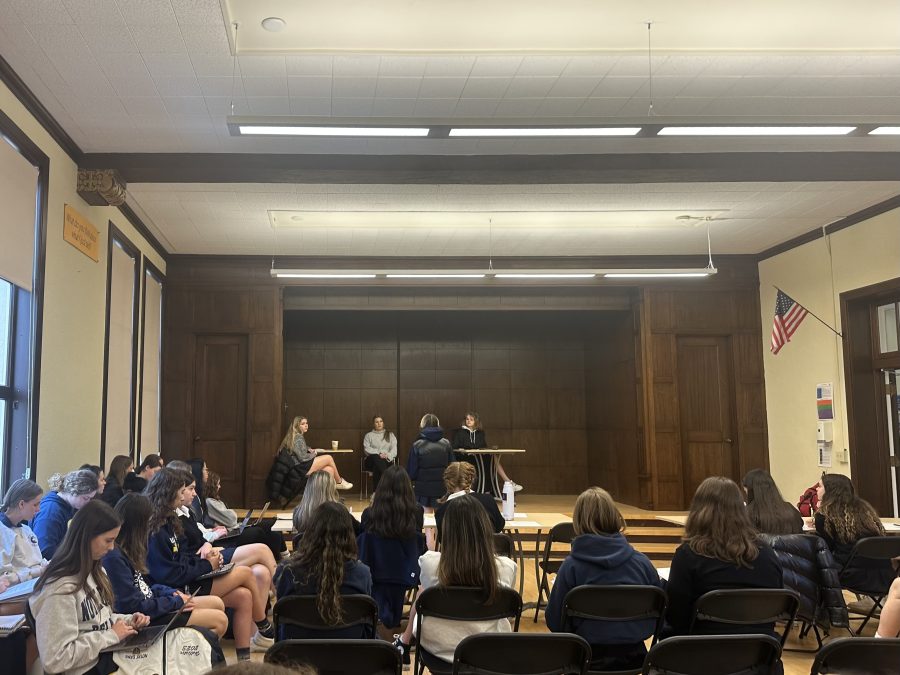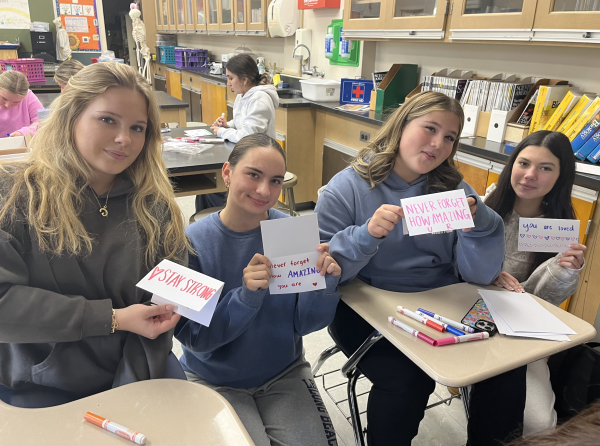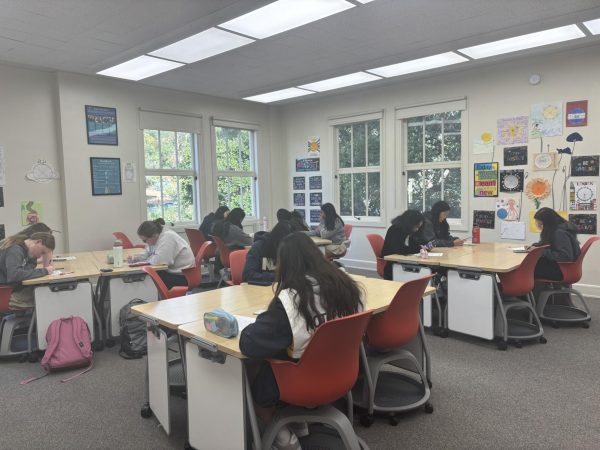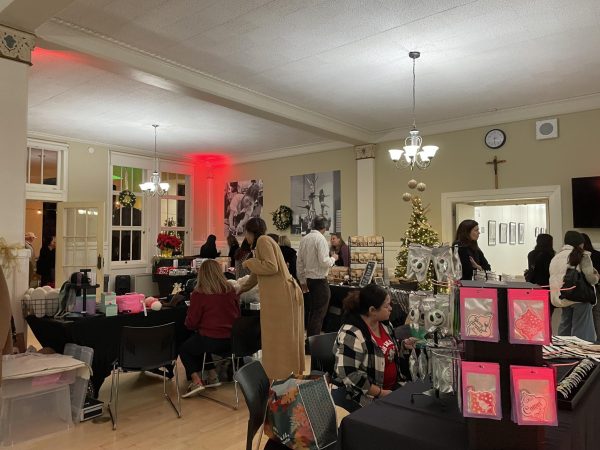Forensics students host annual mock crime trials
The Catalyst / Photo courtesy of Cristine Niswander
The defense team questions one of their witnesses on the stand during the Forensics class’s mock crime trial.
During the last week of March, NDB’s Forensics students hosted their annual mock crime trials, the culmination of their forensic knowledge over the past two semesters of learning.
Forensics teacher Isabelle Haithcox incorporated the mock crime into the Forensics curriculum during the 2017 to 2018 school year. Each year, Haithcox comes up with a new crime story for each class and recruits fellow staffulty members to become characters within the stories. This year’s staffulty volunteers included the science department, school counselors Christina Christianson and Michelle Campusano, Head of School Meredith Essalat, Student Services Coordinator Barbara Tauskey, financial advisor Ann Forman and more.
The two classes always receive separate cases, this year both involving the murders of imaginary victims. The suspects of the case are always NDB teachers, whom the Forensics students arrest, question and bring to the stand in the trial.
The fifth block class received the State of California versus Ms. Ann Forman, in which Forman was accused of murdering the victim Sally Equine with a lethal drug combination. Equine tried to bring her service animal program to NDB but was discovered to have a secret drug dealing business, leading Forman to take drastic measures to prevent Equine from working at NDB.
The seventh block class received the State of California versus Ms. Ashley Dierolf and Dr. Elizabeth Hegarty, in which NDB science teachers Elizabeth Hegarty and Ashley Dierolf were accused of murdering the victim Tammy Williams by chemical asphyxiation after Williams donated money to NDB but refused to give any portion of it to the development of a new science wing at the school.
Science teacher Rebecca Girard has been involved in many of the mock crimes in the past, this year with a prominent role as a suspect in the seventh block trial.
“I love [the mock crime] and look forward to it every year,” said Girard. “It’s just fun to be involved with Dr. Haithcox in some of the planning, and then knowing the behind the scenes and getting to interact with the students and seeing their curiosity and them trying to solve [the mystery] in really an authentic way, as if they were detectives and lawyers and specialists.”
Around the last few weeks of February, each Forensics student applied for the jobs they wanted to take on during the mock crime investigation process and trial. Each student is ensured an important role to contribute to the process, including crime scene photographers, fingerprinting, DNA and poison analysis, detectives, private investigators and prosecution and defense attorneys.
The crime scenes were staged on campus on March 7, using tape dummies made by Sculpture students from a few years ago. After collecting evidence left at the crime scenes, the students in each class got to work analyzing such evidence and identifying possible suspects. The students then only had three weeks to prepare for the trials.
This year, the trials were hosted on March 28 and March 30 for both the fifth and seventh block Forensics classes. The students in each class spent the first day questioning suspects and presenting testimonies, and the second day giving concluding arguments. On the second day, a jury of student volunteers came to a conclusion determining a verdict of guilty or not guilty for each case.
“[Watching the students present their cases] is very fulfilling,” said Haithcox. “It’s always nerve-wracking leading up to that point. There’s so many details to deal with and for it all to come together, and in such a short time because it’s just one project of many that we do. And yet it all comes together and [the students] all play their roles beautifully.”
Forensics student Carina Carlson testified on behalf of the prosecution team for the fifth block trial to support the murder accusations against Forman. Carlson’s role as a CSI supervisor required her to take the stand in front of the jury and present handwriting comparisons linking Forman to a threatening letter as evidence that Forman killed Equine.
“My favorite part of testifying was providing information that the jury took into consideration for their final verdict,” said Carlson. “To have something I said be thought about in such a way was quite cool. From this experience, I’ve gained a better understanding of the many processes that a crime must go through, from investigating the scene to the final verdict reached at trial.”
Forensics student Megan Cabral was a member of Forman’s defense team during the fifth block trial. Cabral and her team questioned all individuals giving testimonies in attempts to provide the jury with enough convincing evidence that Forman was not guilty of murder. In addition to a deeper understanding and knowledge of how forensic evidence is used in real-life trials, Cabral developed other important skills during the trial.
“I learned how to think quick on my feet,” said Cabral. “During the trial there were times where we possibly learned new information or needed to change our argument to emphasize a certain piece of evidence. Being able to adjust in real time is such a key aspect in the courtroom and applicable to real life situations where you need to think and adapt fast.”
In the fifth block trial, the student jury found Forman guilty of her charge of murder in the first degree. In the seventh block trial, the jury found Hegarty guilty on all but one of her charges, including aggravated assault and battery, destruction of evidence and murder in the first degree. Dierolf was found not guilty of her only charge of first-degree murder.
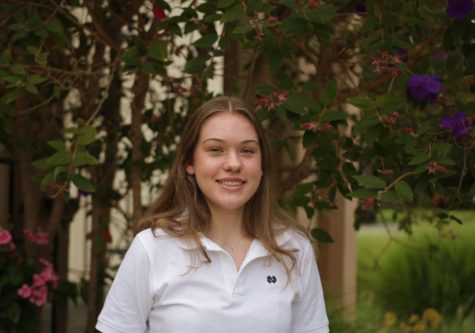
Eva Nichter is a senior at NDB and is one of the News Editors for the Catalyst. This is her third year as a student writer for the newspaper. In addition...

